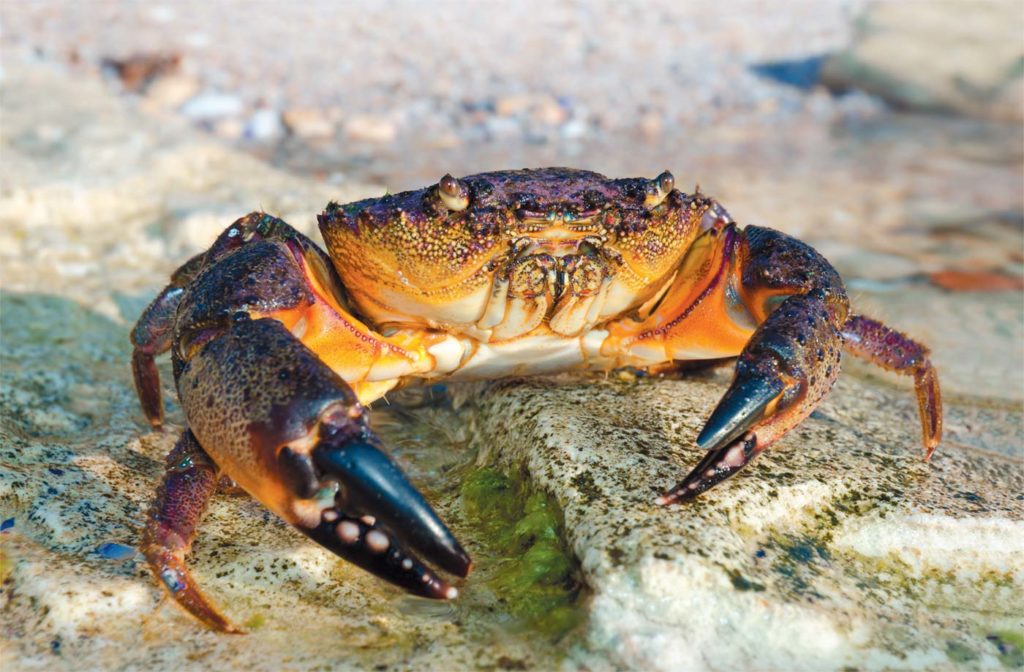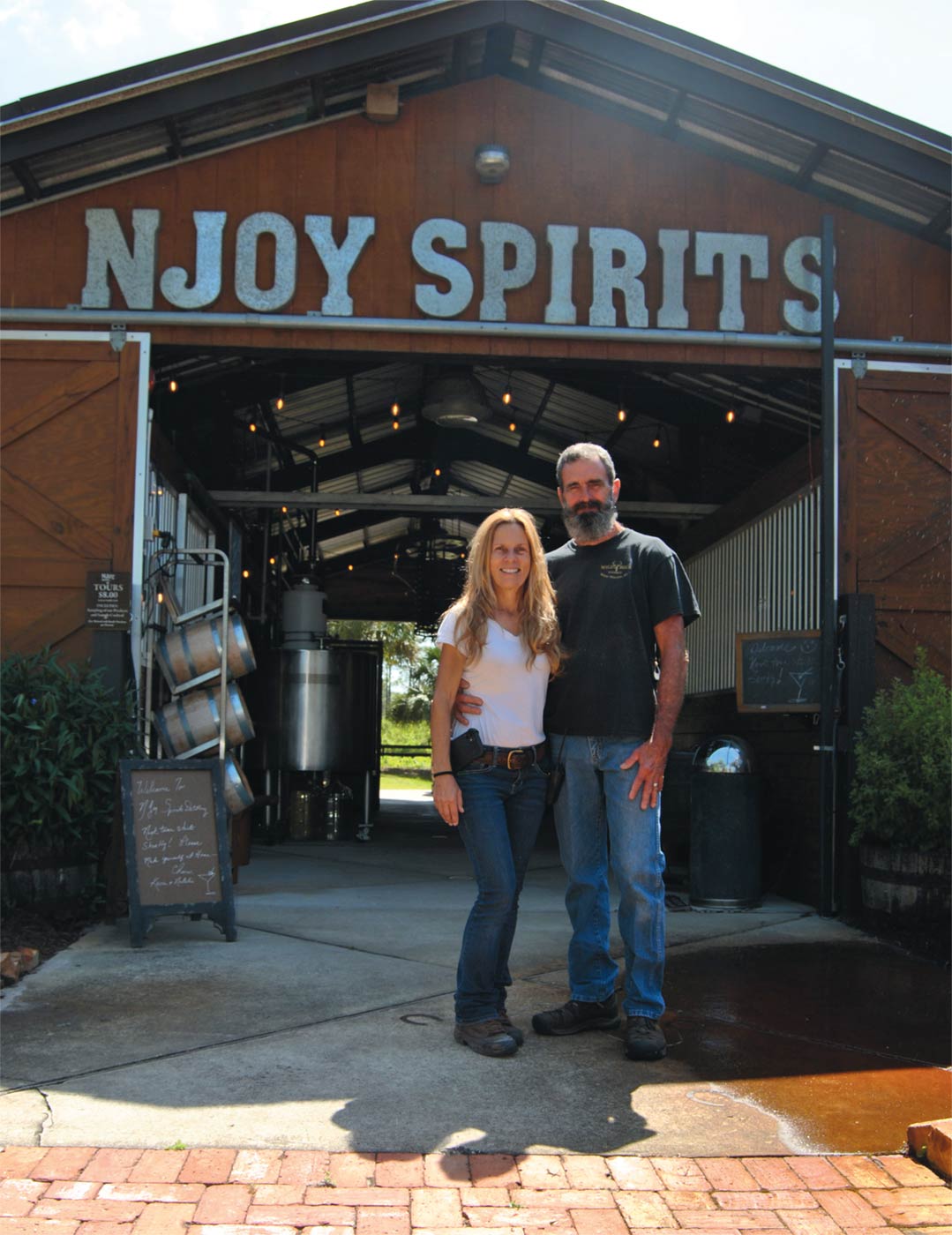
The opening day of stone crab season is a holiday in Florida, no matter what an official calendar says. We might not get the day off from work, but Floridians look forward to October 15 like it’s Christmas. Front-page headlines herald fleets as they leave the dock and report on their first haul.
Stone crabs are one of the oldest and most valuable commercial fisheries, with a dockside value of $30 million. For many folks, they are a way of life. They’re part of a tradition that evokes a surge of pride for the bounty of our waters and those who work hard to bring it to our tables. Stone crab festivals all over the state draw stampedes for a taste of that succulent, buttery claw meat. Each holiday during open season— Thanksgiving to Easter—there’s a spike in stone crab sales.
HOT OR COLD?
I love asking people how they eat them at home. I’ve heard strong opinions about serving them hot or cold and the best recipes for sauces. There are families that prefer their claws cracked by a fishmonger and they eat them at the dining table. Others delight in the messiness of cracking them with their own devices and eating them outside. One thing everyone agrees on: When there’s stone crab, it’s a celebration!
As the daughter of a Florida fisherman raised on Florida seafood, I believe there’s nothing finer than a plate of stone crab claws. And as someone who strives to eat ethically and sustainably, I’ve always felt good about indulging in my favorite delicacy—until recently.
Like many people, I always thought stone crab was a highly sustainable seafood. Stone crabs can release their claws as a natural defense mechanism to escape predators like grouper, octopus, and sea turtles. The crab can then regenerate the lost claw, potentially more than once in a lifetime. For this reason, the stone crab fishery is unique; only the claws are harvested, and the live crab goes back in the water. In theory, it’s a renewable resource. So, I was surprised when I learned that Monterey Bay Aquarium Seafood Watch, an organization that ranks the environmental sustainability of seafood, recommends consumers avoid stone crab.
Commercial stone crab landings have declined over the last 20 years, according to the Florida Fish and Wildlife Commission (FWC), and many regulations for harvesting stone crab have not changed since the 1970s. During that time, demand for stone crab has steadily increased. Consumers are willing to pay more for this delicacy than any other Florida seafood. The claws average around $50 a pound.

Over the past few years, researchers uncovered several reasons for the steady decline in landings. Stone crabs aren’t as resilient as we once thought.
Writer Danielle Rose with a sea trout she caught in the Gulf of Mexico.
Over the past few years, researchers uncovered several reasons for the steady decline in landings. Stone crabs aren’t as resilient as we once thought. They’re being overfished. According to Amanda Nalley, spokesperson for FWC, “It’s a longstanding misconception that stone crabs quickly recover from declawing, regenerate their claws, and can be harvested again by the fishery. Studies have shown that mortality from declawing is higher than previously thought, and a very small proportion of the landings are from regenerated claws.”
Environmental changes are also contributing to the decline. Because the water is warmer, female stone crabs are spawning earlier in the year. Th e open season for stone crabs has remained the same for 50 years, and while the harvest season used to end just before the spawn season, now it overlaps. According to data from the FWC’s Fish and Wildlife Research Institute (FWRI), egg-bearing females, which cannot be harvested, were getting caught in traps at the end of harvest season.
For these reasons, FWC proposed several new regulations in 2020 with a goal to rebuild stock. The season ends two weeks earlier, closing on May 1. Commercial vessels will be limited on the amount of stone crabs they can hold on board before the claws are harvested. By the 2023/2024 season, all crab traps will have to be fitted with escape rings that allow undersized crabs and bycatch to escape. The minimum claw size was increased by an eighth of an inch, to 2⅞ inches.
Commercial fishing is hard work. It depends on weather, cycles, ingenuity, and sometimes luck. These are people who choose to work outside, away from it all. They’re self-reliant. Adapting to new rules, especially now, is a difficult task. Most of the new regulations went into effect in 2021, just as coastal communities, whose economies depend on fishing and tourism, were already under severe strain. Karri Holliday is the owner of Aripeka Stone Crab Company, a commercial stone crab operation and seafood market in Spring Hill. She says that more crabbers have moved to this area because of red tide and slow crabbing in South Florida.
“There are a lot of boats out here right now. We have a very healthy waterway.” Although she wishes the season opened earlier to compensate for ending two weeks earlier, she doesn’t take issue with the new regulations from FWC. “It will help with the egg-bearing females,” she said. “They make the rules, we follow them.”
BEST TO WORST
In 2018, the Monterey Bay Aquarium Seafood Watch began recommending consumers avoid stone crab, a sudden leap from their previous “Best Choice” ranking. Sam Wilding, Fisheries Program Manager of Seafood Watch, said while it’s unusual to make this jump from best to worst, the latest research challenged the presumptions of the fishery’s resiliency. He said they found the crabs put back weren’t surviving, and that’s having an impact on stock. He says at that time, managers were not sounding the alarm bells. Current research and a lack of new regulations led to the dramatic change in Seafood Watch’s recommendation. He sees promise in the recent changes in regulations by the FWC. In particular, he thinks the increase of the minimum claw size is significant. While it’s only an eighth of an inch, he said “that’s about two to three years of growth. It reduces the amount of crab the fishery can harvest in the short term, but the population of these smaller crabs will have a chance to grow, and that has the potential to rebuild stock in the long term.”
There’s also hope, according to Wilding, because this fishery has not collapsed. It’s not too late for stone crabs. The new regulations are the first step to a healthy stone crab fishery for many years to come, and that’s good news to the coastal communities who depend on it. Researchers at FWC and Seafood Watch plan to reassess in a few years. I’m hoping stone crabs inch their way back on the Best Choice list. If they do, I know how I’ll celebrate: gathered with family and friends around a big plate of claws.







